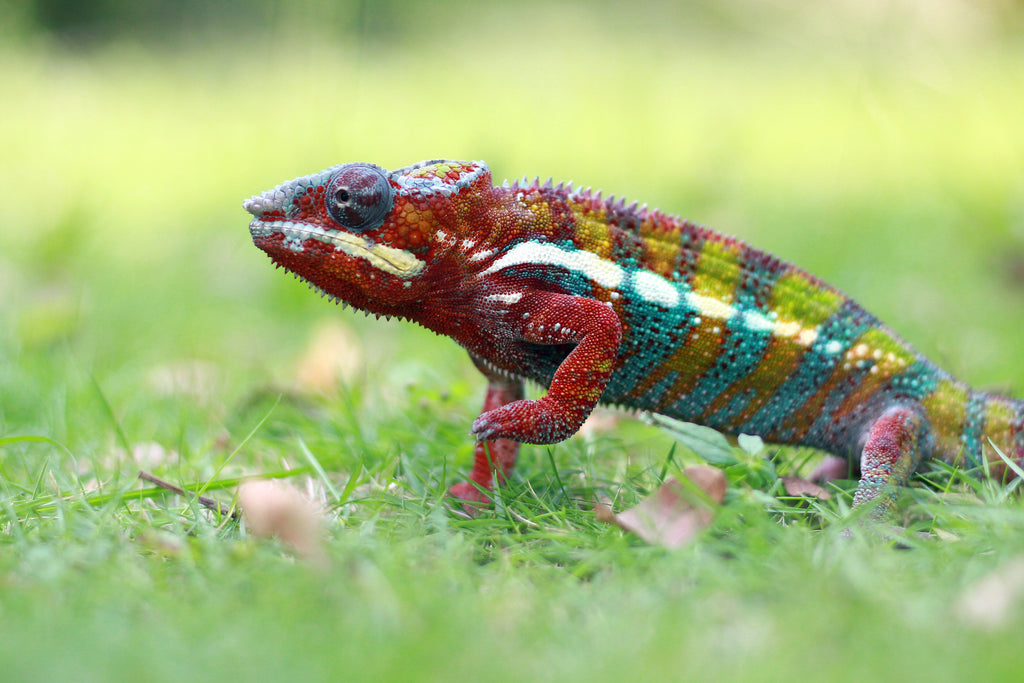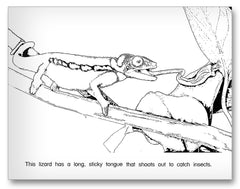
Today's Critter Corner focuses on a favorite: LIZARDS! Who doesn't like a scampery, skittery reptile? With a lizard lesson, you can combine the factual with the fantastic! This lesson comes with a FREE downloadable coloring page of a chameleon whipping out its tongue! The lesson can be spaced out over a few days' time, if necessary.
Lesson Part 1:
Ask children what they know or believe about lizards. Write the "facts" on the board or on a large piece of paper in the first of three columns. The remaining two will be for when you divide that information into "fact" or "fiction." Some things that they may believe may end up in the "fiction" column at the end of the lesson (e.g., they may believe that lizards are slimy).
Lesson Part 2:
Read a narrative text with the children that features a lizard prominently. One book you might choose could be Little Red Lizard , part of the Kaleidoscope Collection . Ask the children questions about things that the lizard does in the book—whether they think lizards will really do those things. Using examples from Little Red Lizard , you could ask whether lizards really come in the house (sometimes!), whether they really eat flies (many do!), and whether they will really sit on your pillow (probably not, unless they are a pet!). You could either have your questions and the correct answers (gathered from the internet) to go with your book ready ahead of time or you could make an activity of looking the answers up together.


Lesson Part 2:
Read with the children an informational text on lizards, such as the Kaleidoscope Collection 's book Lizards . Sample pages from Lizards are shown below, so you can get an idea of the kinds of facts that will be good to collect for your chart. Explain to the children that while, in a fiction book, some things can be true and others can be untrue, in a nonfiction book, everything is true.


Lesson Part 3:
Take your facts from both the fiction and the nonfiction book, and your fictions from the fiction book, and add them to the correct column of the chart. You can ask children if they remember which things go in which place.
Lesson Part 4:
Make an activity of looking up the information the children suggested at the beginning of the lesson and seeing whether it should fall in the "fact" or "fiction" column.
Lesson Part 5:
Let the children complete the coloring page below, either coloring it to match the chameleon on pages 8–9 of Lizards or you can show them some pictures of some brightly colored, fantastic-looking chameleons, and tell them about how chameleons can be pretty much any color, so they can be creative!
- Tara Rodriquez





















































